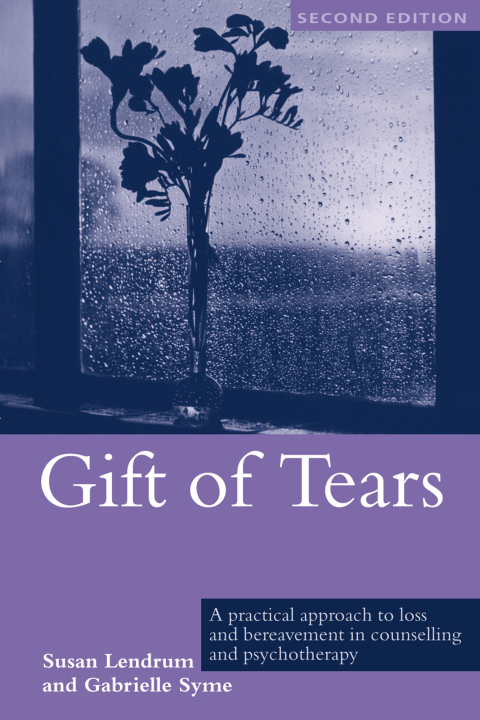Description
Efnisyfirlit
- Cover Page
- Half Title Page
- Title Page
- Copyright Page
- Dedication
- Contents
- List of exercies
- List of tables
- Introduction to first edition
- Introduction to second edition
- Acknowledgements
- Part I Loss and nurture
- 1. Early attachments and loss
- Natural or necessary losses
- Some studies of attachment behaviour
- Quality of attachment
- Attunement and psychoneurobiology
- Secure attachment
- Short separation
- Longer separation
- Insecure attachment
- Summary
- 2. Adult attachment patterns
- Early separations and losses
- Summary
- 3. The nurturing environment
- Aspects of the counselling approach
- Summary
- Part II Death as a particular form of loss
- 4. Experiences of death and bereavement
- Circumstantial losses
- Summary
- 5. The effect of external circumstances and internal factors on the experience of bereavement
- External determining circumstances
- Internal factors
- Summary
- 6. Historical change in attitudes to death and bereavement
- Summary
- 7. Cultural variety
- The value of mourning
- Mourning in different cultural and religious groups
- Judaism
- Christianity
- Islam
- Hinduism
- Sikhism
- Buddhism
- Humanists and non-affiliated groups
- General considerations
- Summary
- 8. Children’s grief ‘Gift of tears’
- 0–2 years
- 2–5 years
- 5–8 years
- 8–1 2 years
- Adolescence
- Summary
- 9. Personal and family experiences of loss
- Drawing your own lifeline
- Summary
- Part III Working with the grieving
- 10. Basic loss counselling skills ‘Give sorrow words’
- Active listening and distractions
- External distractions
- Distractions in your own behaviour
- Attitudinal distractions
- Distractions in your feelings
- Skill of reflecting experience and feelings
- Skill of reflecting using different levels of empathy
- Example of empathy levels
- Summary
- 11. Tasks of mourning Meaning and Internalisation
- The tasks
- To accept the reality of the loss
- To experience the pain of grief
- To adapt to a world in which the deceased is missing
- To emotionally relocate the deceased and move on with life
- The development of continuing bonds
- The process of adaptation
- Narrative creation
- The development and maintenance of continuing bonds
- Summary
- 12. Further skills related to the tasks of mourning and ending counselling
- Setting limits or boundaries
- Beginnings: sessions and relationships
- First session of a new counselling relationship
- Possible openings
- The grief emerges into an already established professional relationship
- The grief erupts into the start of a session in established counselling
- Endings: sessions and relationships
- Session endings
- Ending the relationship
- Time-limited counselling
- Normalising disturbing experiences
- Hallucinations
- ‘Irrational’ behaviour
- Understanding dreams
- ‘Irrational’ beliefs
- Persistent thoughts or images
- Summary
- 13. Ways of helping children
- Immediacy about information and feelings
- When feelings get lost
- The use of drawing
- The ‘faces game’
- The use of sound and stories
- The ‘boxes’ game
- The use of drama, play and music
- Techniques to explore relationships
- When information is lacking
- Maintaining links
- Further considerations
- Summary
- Part IV Anger and guilt
- 14. Understanding anger and guilt
- Origins of anger and guilt
- Uncomplicated anger and guilt in grieving
- Complicated anger and guilt in grieving
- Summary
- 15. Working with anger and guilt in more complicated grief
- The ‘stuck’ patterns
- 1 Idealisation as a protection against anger or guilt
- How the pattern functions
- Counsellor’s feelings and dilemmas
- Counsellor’s responses
- Counsellor’s difficulties
- 2 Vilification as a protection against pain and underlying love
- How the pattern functions
- Counsellor’s feelings and dilemmas
- Counsellor’s responses
- Counsellor’s difficulties
- 3 Anger as a protection against intimacy and underlying despair
- How the pattern functions
- Counsellor’s feelings and dilemmas
- Counsellor’s responses
- Counsellor’s difficulties
- 4 Depression as a protection against intense feelings
- Martha
- How the pattern functions
- Counsellor’s feelings and dilemmas
- Counsellor’s responses
- Counsellor’s difficulties
- Peter
- How the pattern functions
- Counsellor’s feelings and dilemmas
- Counsellor’s responses
- Counsellor’s difficulties
- 5 Suicidal thoughts as a fantasy of release from pain and despair
- How the pattern functions
- Counsellor’s feelings and dilemmas
- Counsellor’s responses
- Counsellor’s difficulties
- Drawing together the threads
- Summary
- Part V Professional implications
- 16. Necessary consultation for complicated grief
- ‘Swamped by feelings’
- ‘Feeling cut out’
- Other areas in which consultation may be required
- Sexual abuse in childhood
- Suicidal intent or serious suicidal thoughts
- Somatisation: ‘weeping through the body’
- Behavioural messages
- Client behaviour within the counselling relationship
- Silence
- Persistent lateness
- Medication
- Summary
- 17. Assessment and referral
- Assessment skills
- Referral skills
- Reasons for immediate referral
- Reasons for later referral
- Timing of referrals
- Method of referral
- Early stage referral
- Later stage referral
- Summary
- 18. Supervision
- Functions of supervision
- The restorative function
- The formative function
- The normative function
- The interweaving of supervisory functions
- Uses of feelings
- The counsellor’s feelings
- Use of counsellor’s feelings to locate denied feelings in the client
- Use of counsellor’s feelings to recognise the counsellor’s need
- Reflected feelings in the parallel process
- Use of the supervisor’s feelings
- Supervision for the unexpected
- The value of supervision
- Summary
- 19. Epilogue
- Appendix A Useful Resources
- Appendix B Useful websites
- Appendix C Furthur Reading
- Appendix D Multimedia
- Appendix E Useful BACP publications
- References
- Author Index
- Subject index







Reviews
There are no reviews yet.